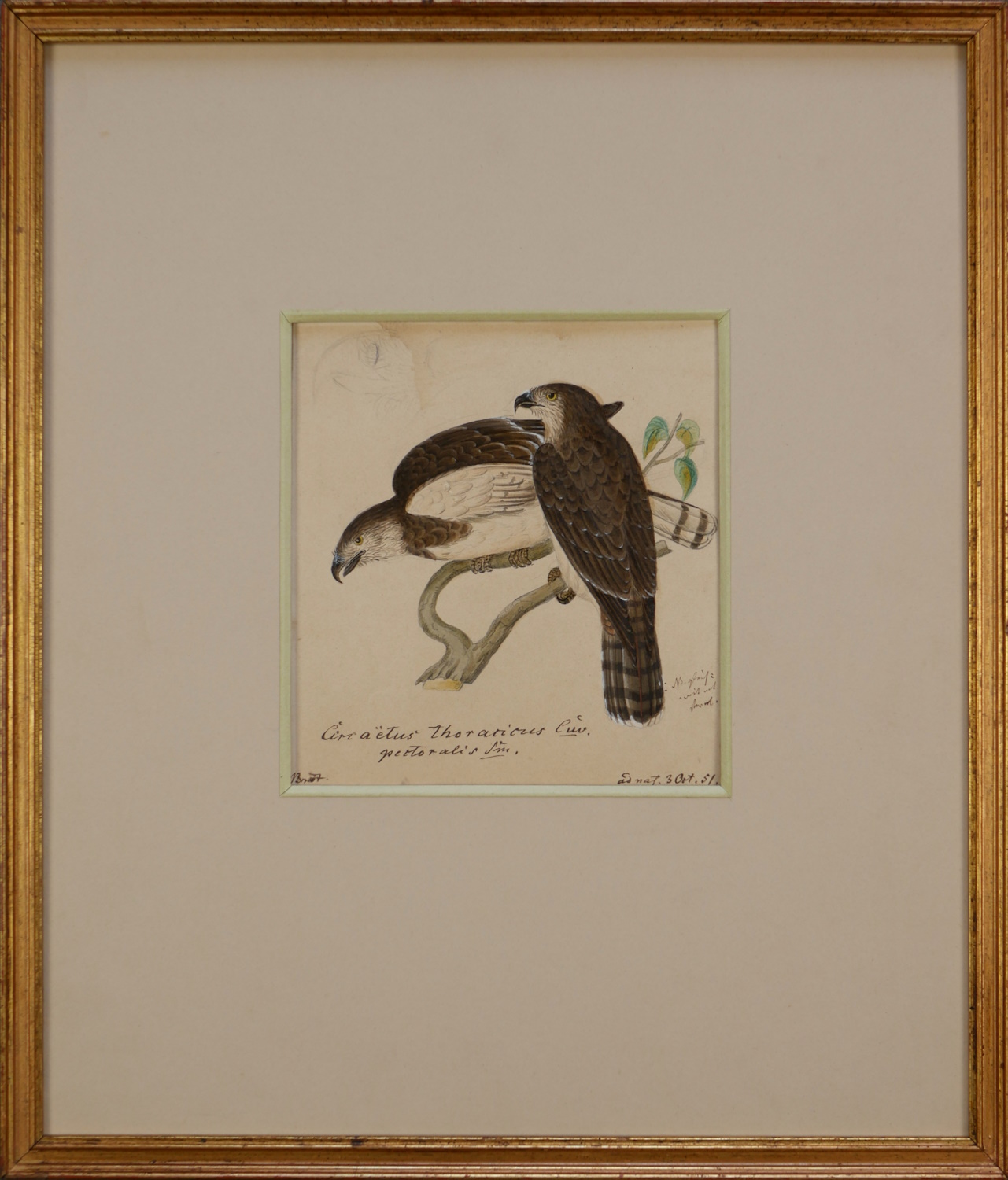Reichenbach, Heinrich Gottlieb Ludwig (German, 1793-1879)
H. G Reichenbach, botanist, ornithologist, and artist was born in Saxony in 1793. He studied medicine and the natural sciences at Leipzig, gaining his doctorate in Philosophy in 1815 and Medicine in 1817. He moved to Dresden in 1820 as professor of natural history at the college of medicine, where he became director of the zoological museum and director of the botanical garden, which he helped found. For most of the rest of his life he remained in these posts, whilst also publishing an enormous corpus of work on ornithological and botanical subjects. He probably first made a name for himself in the wider scientific world with his botanical works, and in this he was greatly helped by his artistic abilities which enabled him, for instance, to engrave all 1000 copper plates for his Iconographia botanica (1823-1832). This combination of accurate description with accurate and pleasing illustration was a keystone of his success and was to stand him in good stead throughout his career.
His greatest ornithological work Die Vollständigste Naturgeschichte der Vögel… was published in 14 volumes with a total of over 1050 illustrations, between 1845 and 1862. It is a bibliographical nightmare: Casey A. Wood describes Reichenbach’s works in general as ‘mostly rare’, and ‘commonly regarded with despair by the cataloguer’. Reichenbach’s intention had been to cover the entire avian world with the Vollständigste Naturgeschichte (a task he left unfinished), but he was frequently adding new sections, different title pages, and new classifications, leading Zimmer to state in desperation ‘I can find no complete and accurate collation of the various components’.
Reichenbach later founded the Dresden botanical gardens and was joint founder of the Dresden Zoo. The museum’s zoological collection was almost completely destroyed by the fire in the Zwinger palace during the constitutional crisis of 1849, but he was able to replace it within only a few years.
Reichenbach died in 1879 and was interred in the Trinity Cemetery in Dresden Johannstadt. The tomb, however, was cleared after abandoning the right to use. However, the cemetery administration had not awarded the grave site, so that at the initiative of the Senckenberg Natural History Collections in Dresden, a stele was erected, which was unveiled on September 11, 2011.
Showing the single result
